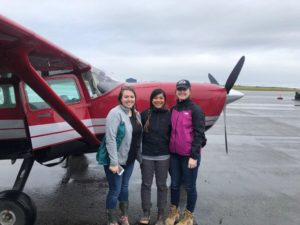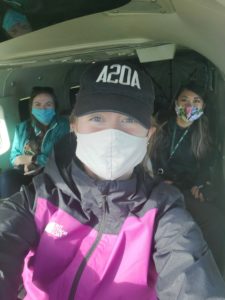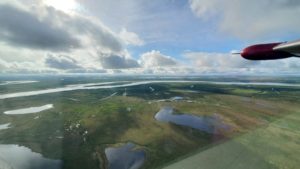SNAPSHOT INTERVIEW: AUTUMN KILLOP SVOSH-SCO
SNAPSHOT INTERVIEW: AUTUMN KILLOP SVOSH-SCO, SOUTHERN COLLEGE OF OPTOMETRY, MEMPHIS, TENNESSEE
By Valerie Tran, OD
During these unprecedented COVID-19 times, particularly in consideration to COVID-19, it may not always be possible to travel abroad and volunteer to help marginalized communities. However, domestic trips are still ongoing such as Autumn Killop’s village trip to Alaska. Autumn, a fourth-year optometry student at Southern College of Optometry, is currently completing her rotation at the Yukon-Kuskokwim Health Corporation. One of the contingencies of completing this rotation is to participate in at least one trip to one of 58 rural villages that the hospital serves.
In addition to this clinic, Autumn is a seasoned volunteer who has done many other one-day volunteer events, serves as an intern for VOSH/International and has traveled with SVOSH-SCO in May of 2019 to Salinas, Ecuador with 3 other doctors and 14 other students to complete a one week humanitarian clinic. With any event, the goal is to give care to as many patients as possible in the small time frame that is allotted. What makes this trip particularly different from the rest is the impact of COVID-19 on clinical care.
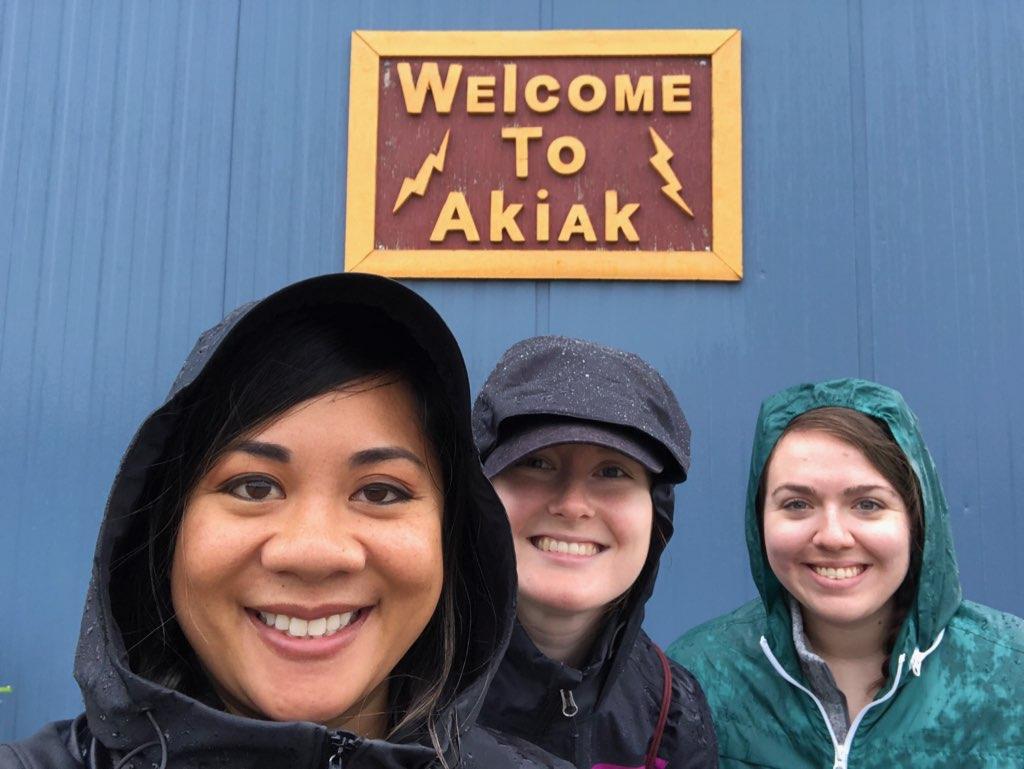
Regardless of being in a pandemic, trips like these will always foster learning. As Autumn says, “Both trips helped strengthen my clinical skills and decision making when resources were limited.”
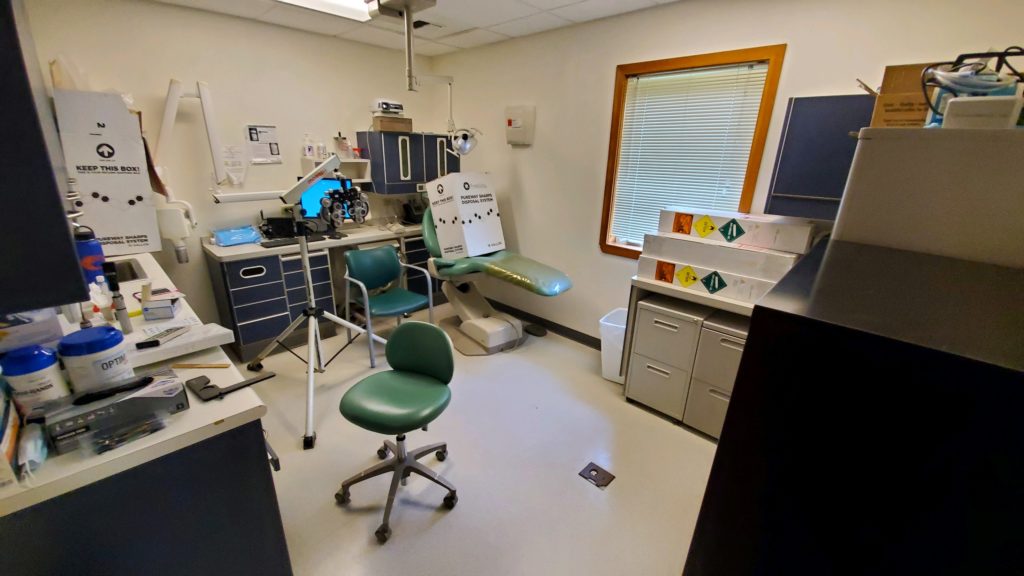
SNAPSHOT INTERVIEW
Valerie: In reference to COVID-19, what steps were put in place to protect you and the patients?
Autumn: In response to COVID, in the clinic, we are always masked and we ask our patients to mask themselves as well. If the patients did not bring a mask, we would give them a face shield to wear. In between every patient, we clean all surfaces or items that the patients came into contact with — chair, occluder, phoropter, PD ruler, etc. We have elected to use our Tonopen for IOP measurements instead of Goldman, unless the patient has a condition that requires a more accurate measurement, such as glaucoma. To cut down on the amount of people in the waiting room at once, when scheduling patients, our doctor would schedule three per hour, scheduled them at the top of the hour, 15 after, and at the half hour.
Most groups of patients were related, so they would all come in together at the top of the hour, then slowly trickle out when their exams were completed. When patients were picking out glasses, they could only look at a small selection, and every pair that they touched had to be cleaned afterwards.
Valerie: How are clinics running differently to protect patients and volunteers?
Autumn: The biggest change, other than a heightened attention to cleaning and PPE, is the decreased numbers in patients, a combination between patients not wanting to come in and us scheduling less to reduce contact between patients. In order to reach the population size that we have in the past on trips, clinic hours may need to be expanded, as well as the number of days spent in the clinic.
Valerie: What was the most surprising thing that you discovered on this trip?
Autumn: The most surprising thing I discovered was the most common conditions that patients present with at the clinic. We serve a primarily Native American population, but there is not a lot of diabetic retinopathy. Instead, we see a lot of macular degeneration and iritis patients. Many of our patients are HLA-B27+ as well.
Valerie: Do any specific cases come to mind?
Autumn: On the last day, there was a middle aged male Native American patient who came in complaining of distance blurry vision. His medical history revealed that he had suffered from congestive heart failure 10 years ago, though he did not experience any visual changes from the event. He was complying with his medications. He also reported that he had been punched on the left side of his face in the past, but reported that there was no trauma to his eyes, only that his glasses broke. We couldn’t refract him better than 20/30, and there were no significant findings in the anterior segment. However, on his retina, there were 9 large chorioretinal scars, three in his right eye and 6 in his left eye, that were 1 disc diameter or larger. When asked about trauma again, the patient continued to deny any sort of trauma to his eyes. I had never seen lesions like this before, and although they didn’t perfectly resemble POHS “punched out lesions” looked very similar. We asked that the patient fly or boat into Bethel so that we could photograph and document these lesions, as well as finalize a prescription for him.
Valerie: What other things did you learn on this trip?
Autumn: My biggest takeaway from this experience was learning more about the culture and lifestyle of the patients in bush Alaska. Since there is daylight almost 24/7 here in the summer, people are out and about working on tasks around their house, fishing, going to “fish camp” and more while the sun is out. Public places do not open before 9 am here, and the busiest parts of the day were at night when people were done fishing or taking a break from working at fish Camp.
Valerie: What are your views on how clinics abroad (and domestically) will need to change given the impact of COVID-19 on the communities that are being served?
Autumn: It’s hard to say how much everything is going to change as we are still in the midst of dealing with the current pandemic. When our preceptors plan the village trips, they have to reach out to the different villages and approve everything with the YKHC hospital, the local village clinic, and the local tribal council. Once we are cleared for travel by all involved parties, we have to be COVID tested to ensure that we would not bring anything to the village. Although the villages up here are very isolated from the rest of the state of Alaska — and especially the lower forty-eight — there are many people who are not comfortable enough to travel to Bethel see us, come to our village clinics, or even allow us to travel to their villages to offer our services.
Our number one concern is always patient safety, and many of the places VOSH/International travels to (especially internationally) do not have access to adequate healthcare coverage, both financially and/or physically. This is a huge factor to consider with future clinics for both our patients and ourselves. Schools may not allow their students to travel until a vaccine is available, which is a decent portion of our volunteers. I believe testing pre-travel and post-travel will be the standard until a vaccine is made available to the general public, which is a great expense. In my opinion, the biggest limitation at this point is when we will be able to help those both domestically and abroad. Until this pandemic is under control both within the United States and the counties we travel to, both us and our patients are risks to each other while there is no vaccine to keep us safe.
